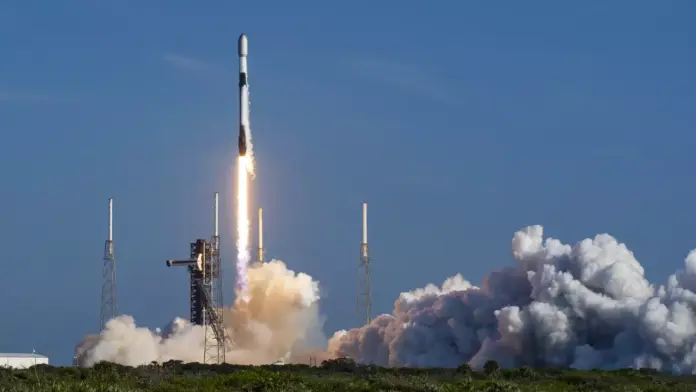On February 4, 2025, a giant leap into space technology took place when SpaceX blasted a Falcon 9 rocket off to carry 21 Starlink satellites into orbit precisely at 5:14 a.m. EST (10:14 GMT) from Cape Canaveral Space Force Station, Florida. Launches marked an integral part of the company’s plan to create extensive coverage of the global high-speed internet via the company’s Starlink internet constellation.
This launch is special for many reasons. Of the 21 satellites, 13 can use direct-to-cell functionality, and that means they will eventually provide cellular connectivity in places where the traditional networks cannot. This is another step in making dead zones a thing of the past and truly universal access to the internet in every corner of the globe.
A Record-Breaking Booster Makes History
Perhaps the most interesting aspect of this launch is that the first stage of the Falcon 9 completed its 21st launch. That booster had already flown into space and returned 20 times, and among these missions, has made 16 dedicated to launching Starlinks. The reuse here, for the engineers involved with SpaceX, marks one of the significant fruits of the work towards inexpensive space flight.
The first stage successfully landed just eight minutes after launch on the SpaceX drone ship, “Just Read the Instructions,” stationed in the Atlantic Ocean. It’s always a great treat to see boosters land pinpoint accurately, but it does talk a lot to the efficient recovery and reusing of rockets from SpaceX.
The upper stage of the Falcon 9 flew on into orbit, carrying 21 Starlink satellites to their appointed positions in LEO. It was approximately 65 minutes into the flight when satellites began launching on this mission, bringing SpaceX’s constantly expanding constellation yet another step closer to completion.
Also read : Top 5 Business Trends in 2025: AI, Sustainability & More
The Expanding Starlink Constellation
The Starlink program by SpaceX has already become the largest satellite constellation ever built and is growing exponentially.
- In 2024 alone, SpaceX launched more than 130 Falcon 9 missions, two-thirds of which were Starlink-related.
- The company has placed nearly 7,000 Starlink satellites in orbit as of early 2025.
- This was the 14th Falcon 9 mission of 2025, and nine of those were Starlink-related.
- As the Starlink network grows, so does service, coverage, and access to customers in rural and underserved areas.
The Power of Direct-to-Cell Technology
The most significant upgrade of this launch is the inclusion of 13 Starlink satellites that can directly communicate with cell phones. This technology enables users to connect to the Starlink network using just a regular mobile phone, without ground-based cell towers.
This might just change communication once and for all, especially during disasters, at sea, or even in remote places where network signals cannot reach.
Imagine yourself getting stranded in the middle of the ocean or deep inside a mountainous terrain yet able to send a text message or call via the satellites of Starlink.
The Revolution of Reusability
SpaceX has established its success through rocket reusability, lowering the cost of space travel dramatically. The first stage of the Falcon 9 used in this mission has now flown 21 times, demonstrating that rockets don’t have to be single-use.
Reusability is the big key to making space flight affordable, and this technology plays an important role for SpaceX in its long-term mission to the Moon and to Mars. This is how perfecting the tech for recovering and reusing rockets will help SpaceX lead the way in deep space exploration in the future.
What’s Next for SpaceX?
No sign of losing steam to SpaceX, however. Later this month, there are already set plans for multiple other Starlink launchings that have the capability of providing the company with almost complete global web coverage.
But other than Starlink, there is its next-generation rocket Starship that is going to be considerably a part of the future human exploration by NASA and beyond into Mars. Satellites continue being launched by the mighty Falcon 9, but the future is a different one-the Starship.
Also read : Cost of Living in Texas 2025: Living Index, Taxes, Home Prices
Conclusion
Almost 7,000 Starlink satellites orbit the Earth. These are being designed by SpaceX for the future of global connectivity. But today’s mission wasn’t about launching satellites; it was more about bringing the world closer together by ensuring no place on Earth is ever out of reach.








